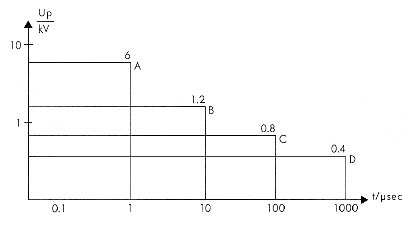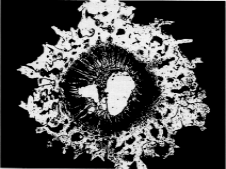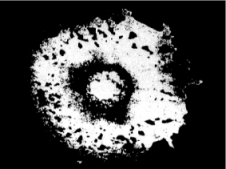|
Radio interference
suppression capacitors serve to reduce or suppress the HF
voltage interference in electronic equipment. The RFI
capacitors remain on the mains for an uninterrupted period of
10, 20 or more years and have to both protect the appliance
against line-side surge voltages/transients and suppress
reactions of the appliance on the mains supply.
Transients
are voltage spikes to which the mains voltage is subjected and
which can easily occur several times a day in low voltage
mains supplies with amplitudes of 2000 V and above. Peak
values can be as high as 6 kV (figure 1).
Figure 1: Mains
transients

A = Atmospheric disturbances (lightning flashes,
faults in the high voltage system).
B = Faults in the mains
or in nearby equipment (e.g. faulty fuses, response of power
switches).
C = Switching on/off of electric equipment
(motors, welding sets, household equipment etc.).
D =
Voltage spikes from equipment like power supplies, inverters,
TV-sets etc.
Radio interference
suppression capacitors are used to block and attenuate these
voltage spikes and are defined in X and Y classes according to
the demands they have to satisfy.
Class X
capacitors have unlimited capacitance and are
connected between phase to neutral or phase to phase
conductors. Class Y capacitors have increased
electrical and mechanical safety and are installed between
phase conductors and the shock protected earthed casing, thus
bridging the insulation of the appliance.
Risks Involved with Plastic Film
Dielectric
Polyester and
polypropylene capacitors are used for radio interference
suppression although there is a possibility of these
components catching fire. The physical process which finally
leads to the self-ignition of the capacitor
is approximately as follows:
- Transient voltage
spikes strike the load's mains input. The current can easily
reach a level of 200 A for a few microseconds.
- The RFI capacitor
offers very little virtual resistance to the high voltage
spikes.
- At the weakest point
of the dielectric there is a breakdown and temperatures of
several thousand °C can occur in the surrounding area. A
metal-free insulated area is created around the breakdown
channel. This process is referred to as self-healing.
- As this process
continues, up to 41% of the previously bound carbon is
deposited in the form of conductive graphite sediment in the
insulated area of plastic film capacitors
and forms highly resistive carbon bridges (figure
2).
- With the accumulation
of such damaged areas throughout the life span of the
equipment, or because of high energy self-healing processes
of the capacitor, the insulation resistance is considerably
reduced. This inevitably leads to an increase in the
capacitor current, which in turn causes overheating of the
component. The gas pressure which is produced in the
interior of the capacitor causes the casing to tear open and
the gas mixture to ignite and burn for several minutes with
a flame similar to that of a welding torch.
- Even in the case of
fire, the capacitor remains so highly resistive that even a
mains fuse connected in series does not respond.
 |
|
 |
| |
|
|
| Figure 2: Breakdown channel
polyester |
|
Figure 3: Breakdownchannel metallized
paper |
Advantages of the WIMA Metallized Paper
Technology
Metallized paper
capacitors are subject to the same physical factors,
too. However, in the case of WIMA metallized paper capacitors,
the amount of carbon deposited in the form of graphite
sediment is 20 times smaller, thanks to the good oxidation
balance of the paper dielectric.
| Dielectric |
Total formula of the molecular
chain |
Proportion of deposited carbon in
% |
| theoretical |
empirical |
Cellulose (paper)
Cellulose
acetate |
C6H10O5
C10.6H14.5O7.3 |
2
5 |
2.2
3 |
| Polypropylene |
C3H6 |
54 |
50.5 |
| Polyethylene terephthalate |
C10H8O4 |
41 |
37.5 |
The insulation area
created during the self-healing process is free of carbon
bridges, so that minimal short circuits cannot occur (figure
3). An inadmissible rise in temperature because of a
decreasing insulating resistance is avoided. The capacitor has
regenerated completely.
In addition WIMA MP
capacitors are fully impregnated under vacuum and
encapsulated with self-extinguishing material. There are no
air pockets and contact of the capacitor paper with oxygen is
not possible.
Extensive tests have
shown that, even when high energy pulses are applied, WIMA
metallized paper capacitors are not actively flammable because
of the high breakdown strength and significantly better
regeneration behaviour of the metallized paper.
Model of a reproduceable flammability
test | 